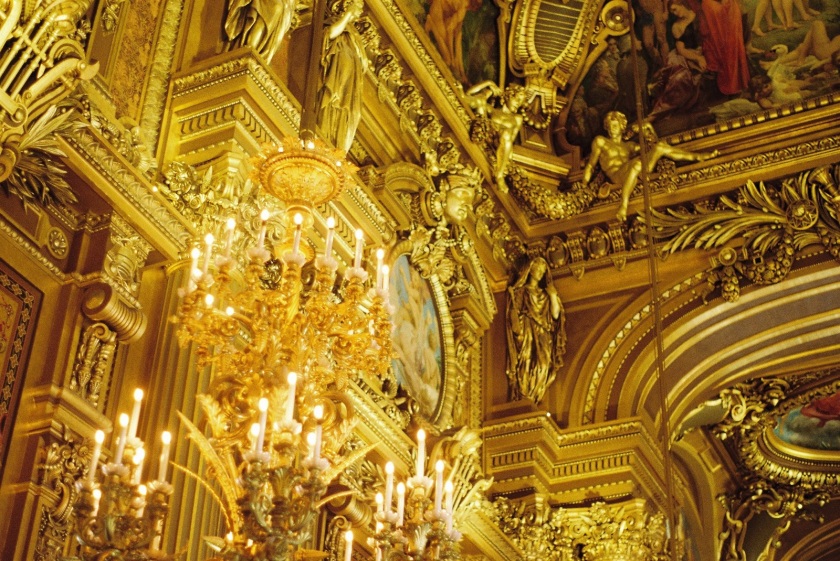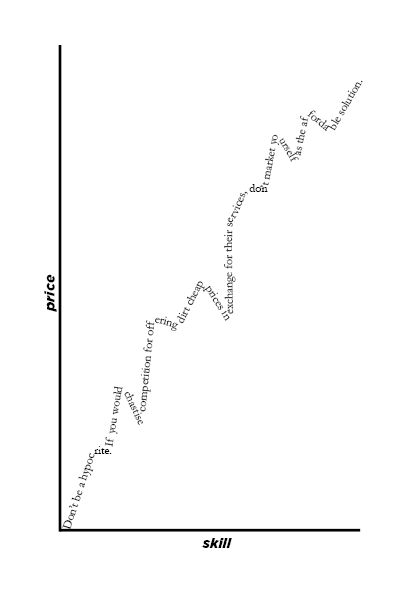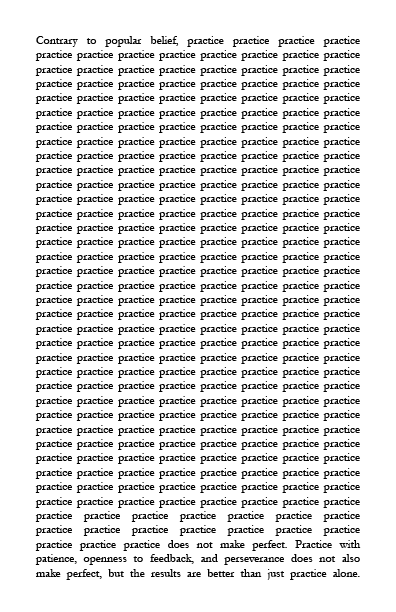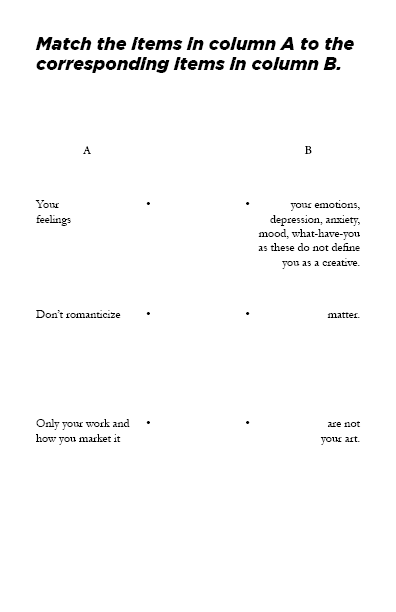I used to work for a boss who had a ready and very blunt remark to everything. At the time, I was in charge of a team of designers and was responsible for preparing art and layout for his final review. I remember him particularly for his colorful use of language to express his approval (“This design perfectly captures the happiness of a child!”) and disapproval (“This looks like poison! Rat poison!”), as if his compliments and insults were premeditated.
I especially remember how he would always judge us for our taste. He was very particular about art and would make the connection that poor work stems from poor taste. I found this a bit concerning as I’ve always believed that taste was subjective and that there’s truth to the saying “to each his own.” But working with him made me wonder if there was ever a definite answer to the question of taste. Maybe a study of some sort had already been done to differentiate good taste from poor taste. Maybe science actually had a way for me to prove that I, as a matter of verifiable fact, had a most excellent taste.
A girl can hope. So of course, I turned to the Internet to look for answers.
As you can imagine, the search yielded almost no substantial result. While we can trace back the discussion about beauty to Ancient Greece, it seemed as if modern science couldn’t be bothered to deal with the question. I did encounter an interesting study that said beauty was objective because a huge number of people could be relied upon to agree on the prettiest shape and color. The researchers conducted a survey and apparently, most of their sample agreed that blue was the prettiest color and circle was the prettiest shape. They even agreed that the ugliest thing was a brown rectangle. Therefore, that blue is the prettiest color in the spectrum was not a matter of debate, the study claimed, as if the popularity of any opinion ever made it factual.

So imagine how pleasantly surprised I was when world-renowned Austrian designer Stefan Sagmeister brought the topic up at the recently concluded Graphika 20/20. He started his talk with evidence that beauty was not in the eye of the beholder; he asked all 3,000+ of us what we thought the prettiest color and shape were, and the results were not the least bit surprising.
Sagmeister went on to list and reframe his happiest memories as outcomes of beautiful design, highlighting the importance of making beautiful things and not simply things that function. He argued ardently against Austrian architect Adolf Loos, whom he blamed for popularizing the view that ornamentation was a crime. He went so far as to claim that design caused people to live happy or miserable lives, citing the number of angry tweets from people who have to board public transportation in ugly terminals versus in grand ones. The desire for beauty is inherent to humans, he said, because if it weren’t so, why did prehistoric men felt the need to carve stone tools into perfectly symmetrical shapes?
I couldn’t help but be reminded of encountering the term ‘aesthetics’ back when I was a university student. Nowadays, we use the term aesthetics to refer to the visual appeal of any material, but aesthetics in philosophy as I learned in class, refers to the study of beauty, art, and our appreciation of either. I had to admit that given that it had its own term and study, beauty must be as important to us humans as the concepts of truth (logic) and morals (ethics).
A quick refresher for all of us: The discussion about beauty and art may go way back to the time of Plato, but the notion of taste only became popular in the 18th century. It was a time when rationalism was in vogue and prominent philosophers argued that the merit of any work of art can only be judged after a thorough process of examination. Nothing can be thought of as either beautiful or crass without justification. This was later contested by a group of thinkers who claimed that we do not reason for things to be beautiful but rather “taste” them as we do food. Jean Baptiste-Dubos said:
“Do we ever reason, in order to know whether a ragoo be good or bad; and has it ever entered into any body’s head, after having settled the geometrical principles of taste, and defined the qualities of each ingredient that enters into the composition of those messes, to examine into the proportion observed in their mixture, in order to decide whether it be good or bad? No, this is never practiced. We have a sense given us by nature to distinguish whether the cook acted according to the rules of his art. People taste the ragoo, and tho’ unacquainted with those rules, they are able to tell whether it be good or no. The same may be said in some respect of the productions of the mind, and of pictures made to please and move us.”
And lo! The concept of taste was born.

But whether or not you agree with the rationalists or with Baptiste-Dubos, the debate between immediacy and reason is just one issue among many. Discussions of taste and beauty always led to a hundred more questions: Do we judge something as beautiful because that’s how our community taught us to react to it? Do we think that someone is beautiful because it’s a biological instinct that encourages procreation and the survival of our species? Do we judge an app’s design to be beautiful because it gives us a pleasurable experience? If the answer to the latter was yes, would it then be possible to live a life of joy by surrounding one’s self with things perceived as beautiful? And could we actually design happier lives by way of designing beautiful things as Sagmeister said?
Is beauty all that stands between me and happiness?
The cab I rode on the way home from the conference was white with streaks of green paint. It was a bit battered and had obviously seen the passage of time. Inside, the space was cramped and the seats were of the color often described as the ugliest shade. Whereas I left the building via floor-to-ceiling glass doors, I entered my home through a rickety screen door. Like the taxi we took, the apartment my boyfriend and I rent is cramped; the space is littered with our things because the cats would always run around thrashing the place whenever we went out. We were lively discussing the things we heard at the conference a few minutes earlier, but we came home in silence.
I looked at the mirror and wondered whether or not I’d be happier if I thought myself a thing of beauty. This was the only question I had an answer for, as the dim light above my head made the circles around my eyes look darker than they actually are.
Even as a teen, I’ve always been fascinated with ornate hairbrushes and teacups that have survived their era only to rest in museums. I’ve always been in love with classical buildings and art deco establishments. I’ve always adored the beautiful remnants of bygone eras, despite a friend pointing out that these old, beautiful things weren’t necessarily markers of a time when ornamentation was standard; they’re beautiful things reserved for the people with power and money to afford them.

But hey, a girl can have taste… and maybe, a bit of hope.






